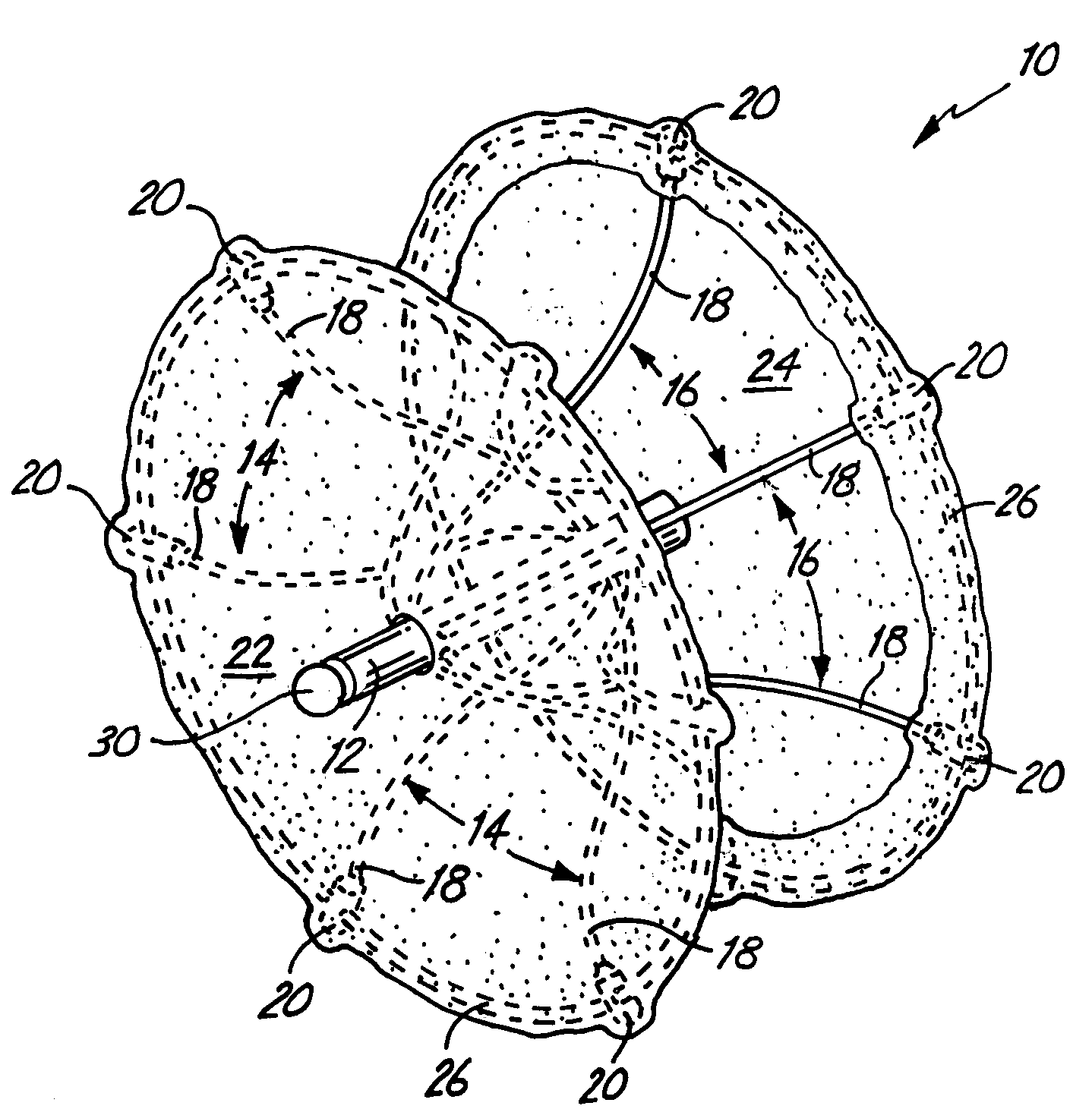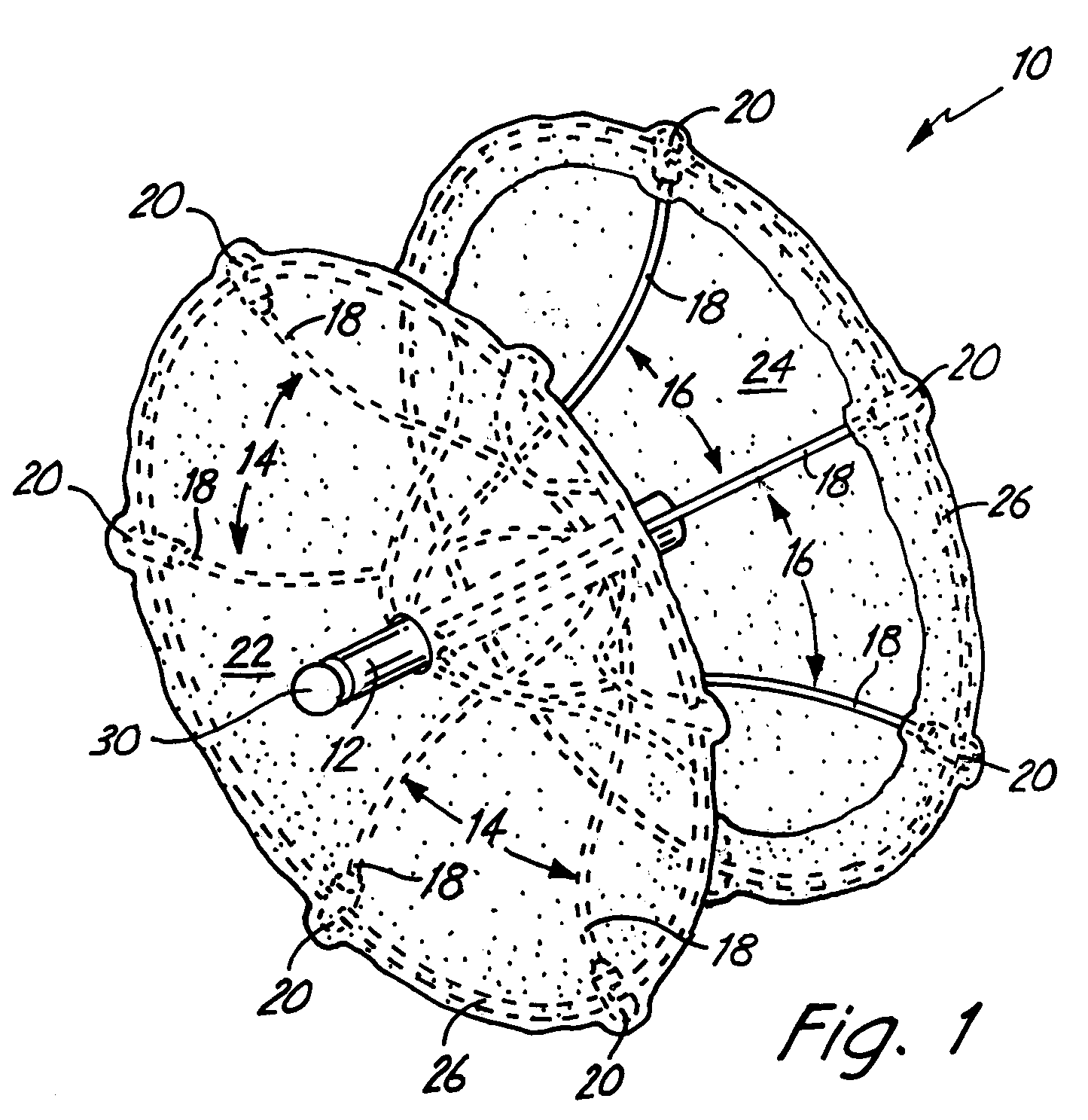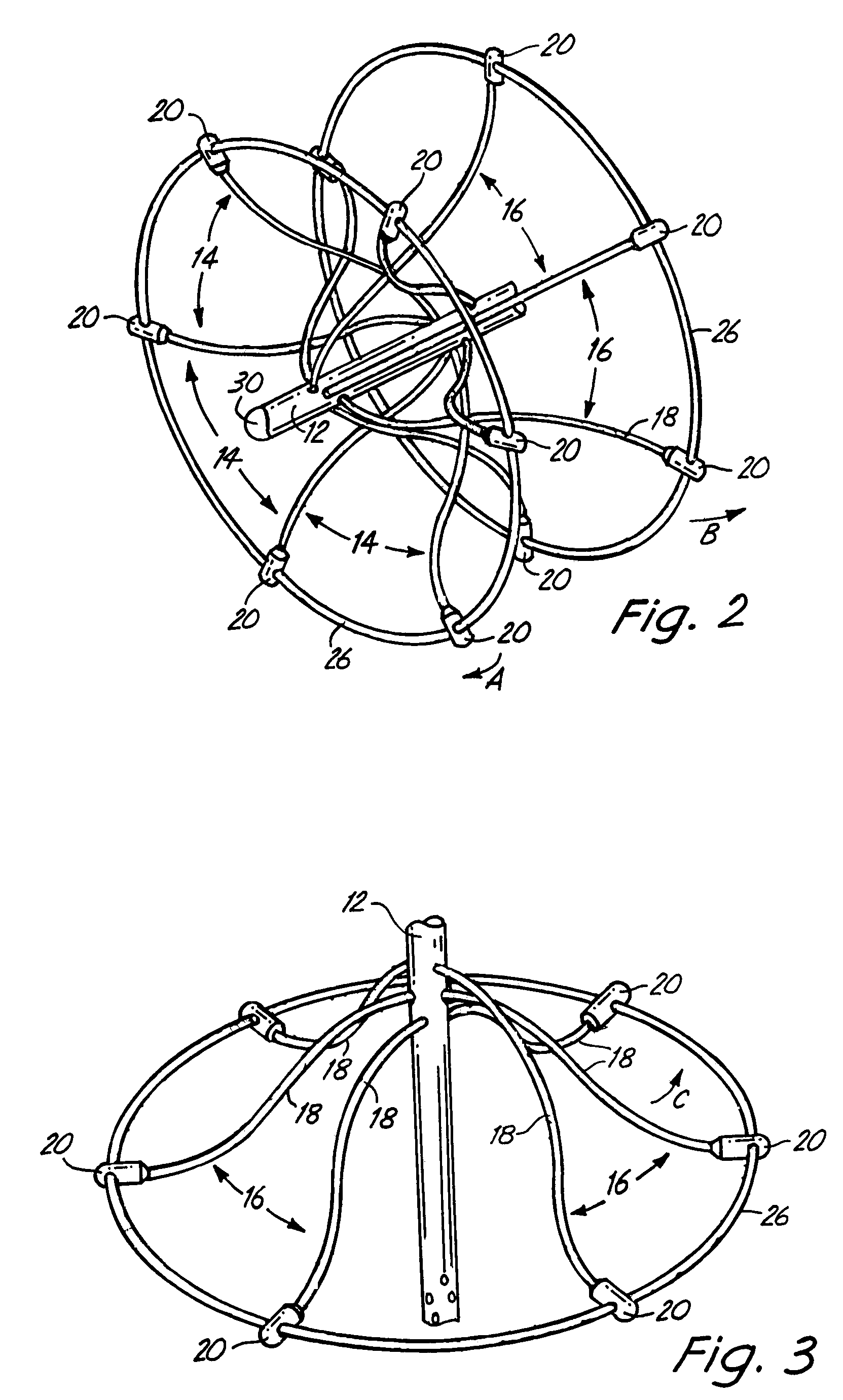ASD closure device with self centering arm network
a technology of arm network and occlusion device, which is applied in the field of occlusion device, can solve the problems of risky, painful, expensive procedure, and the defect may not be properly occluded by the occlusion device, so as to reduce the chance of blood shunting through the defect and increase the effectiveness of the occluder
- Summary
- Abstract
- Description
- Claims
- Application Information
AI Technical Summary
Benefits of technology
Problems solved by technology
Method used
Image
Examples
Embodiment Construction
[0021]FIG. 1 is a perspective view of an occlusion device 10. The occlusion device 10 comprises a center post 12, a right set of arms 14, a left set of arms 16, individual wire arms 18 which make up the left and right sets 14, 16, end caps 20, a right sheet 22, a left sheet 24, and two wire hoops 26. The right set of arms 14 is connected to the center post 12 and comprises the six wire arms 18 which are capped with the end caps 20. The hoops 26 surround the perimeter of the right and left sheets 22, 24 and pass through holes 28 in the end caps 20. A grasping knob 30 is located near the tip of the center post 12. Both sets of arms 14, 16 are located on the inner sides of the sheets 20, 22.
[0022]The sheets 22, 24 are connected to the device 10 at the hoops 26. The sheets 22, 24 may attach to the hoops 26 by folding each sheet 24, 26 over the perimeter of the hoop 26 and securing the sheets 22, 24 in place. A variety of securing methods may be used such as suturing, heat treating, or l...
PUM
 Login to View More
Login to View More Abstract
Description
Claims
Application Information
 Login to View More
Login to View More - R&D
- Intellectual Property
- Life Sciences
- Materials
- Tech Scout
- Unparalleled Data Quality
- Higher Quality Content
- 60% Fewer Hallucinations
Browse by: Latest US Patents, China's latest patents, Technical Efficacy Thesaurus, Application Domain, Technology Topic, Popular Technical Reports.
© 2025 PatSnap. All rights reserved.Legal|Privacy policy|Modern Slavery Act Transparency Statement|Sitemap|About US| Contact US: help@patsnap.com



